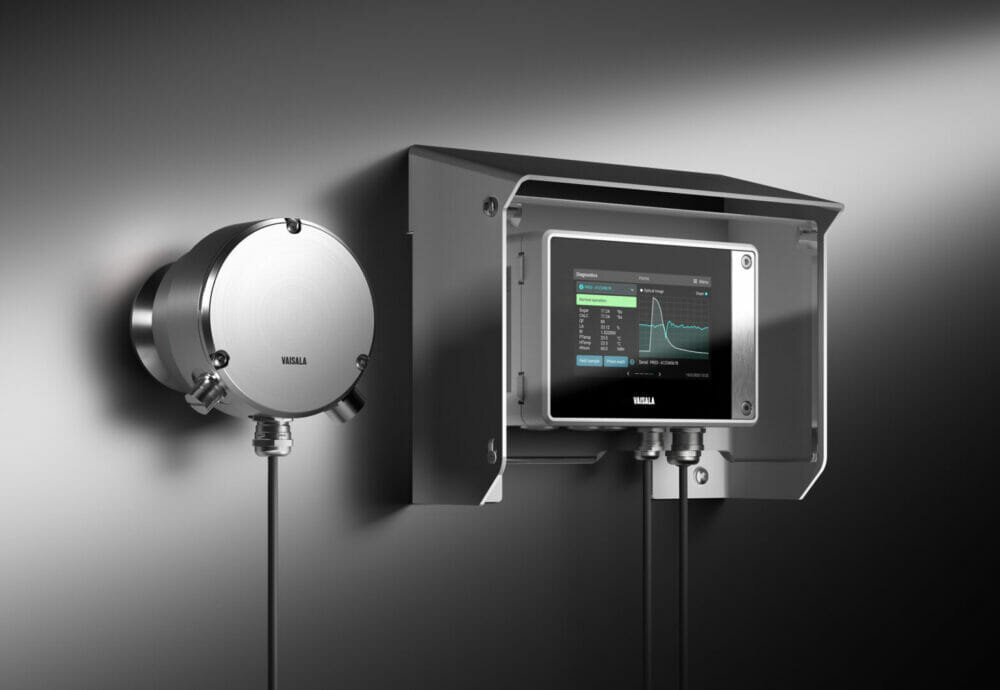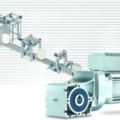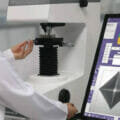For over 40 years, K-PATENTS was arguably one of the process industry’s best kept secrets, but within its user base, the company enjoyed an enviable reputation for accurate reliable measurements in even the most challenging process conditions. As such, K-PATENTS had a good fit with the global measurement technology company, Vaisala, which acquired the business in December 2018.
“We knew that K-PATENTS customers are able to trust the data from their refractometers, and we were very impressed with the company’s experience and expertise in liquid measurements,” explains Jutta Hakkarainen, Director, Liquid Measurements at Vaisala. “Application expertise, measurement accuracy and long-term reliability are also family traits at Vaisala, but excitingly, we could see enormous growth potential for this technology, so it made perfect sense to put the global power of Vaisala behind it, in order to realise that possibility.”
In February 2023, following a long period of consultation with customers and after a meticulous engineering review of the refractometer range, Vaisala announced the launch of Polaris™ – the latest generation of inline refractometers. The new Polaris™ instruments offer outstanding levels of performance, as well as compatibility with Vaisala’s family of high-quality Indigo industrial transmitters for data logging and display, prism wash control, instrument configuration, security, etc. “This new range of refractometers has been designed to meet the most demanding application requirements; providing accurate, reliable, inline liquid measurement technology for a wide variety of industrial sectors,” explains Hakkarainen.
Applications for Polaris™ inline refractometry
Inline refractometers are used in a wide variety of industries, including food, beverage, brewing, dairy, pulp and paper, pharmaceutical, semiconductor, chemical, petrochemical refining, and textiles. However, in order to determine which processes are suited to refractometry, it is important to understand how this technology works.
Refractometers measure the Refractive Index (RI) of a liquid, which is the critical angle of refraction of light in a process medium. The critical angle is that from which the total reflection of light starts. Concentration values can be determined from the RI measurements taking pre-defined process conditions into account. Vaisala’s Polaris™ refractometers are therefore supplied factory calibrated to meet specific process requirements.
The most obvious applications for inline refractometers are those with binary solutions, where one (highly refractive) component is dissolved in a solvent, such as sugar in water. Consequently, one of the most common applications for Vaisala’s refractometers is the continuous measurement of Total Solids (TS) and Brix (dissolved solids) concentrations in beverages. Of course, inline refractometry is also suited to applications with multiple constituents, where process managers need to monitor aggregated changes in the levels of (refractive) components. Examples include continuous measurements in the pulp and paper industry; the monitoring of milk standardisation and homogenisation in diary processes, and for monitoring almost every stage of beer brewing.
Continuous RI data is particularly useful where process operators are looking for a specific change in the RI measurement. For example, in quality control and for detecting product-to-product and product to-CIP cleaning interfaces.
Refractometry vs other measurement methods
At the risk of stating the obvious, continuous monitoring is preferable to laboratory analysis for the vast majority of process control applications. This is because sampling only provides a retrospective indication at one moment in time, the process is laborious and costly, and by the time the results are available they may no longer be applicable.
A variety of process measurement techniques are available, and the choice of technology will depend on the process. Density and RI instruments measure liquid concentration and composition. Density meters employ, among others, Coriolis, microwave, ultrasonic and nuclear techniques. Each of these can provide useful measurements in some applications, but their accuracy can be affected by air bubbles, particles, impurities, deposits, solids, flow variation, vibration, temperature, and turbulence.
Summary
Vaisala’s refractometers help improve the quality and consistency of production, whilst lowering costs, optimizing processes and reducing waste. However, Jutta Hakkarainen says: “The benefits of Polaris™ refractometers extend beyond useful process measurements, because they come with the accuracy and long-term reliability that Vaisala customers expect. In contrast with other inline measurement instruments, Polaris™ refractometers are simple to operate and maintain, and they are insensitive to flow rate, suspended solids, crystals, bubbles, entrained gases and sensor coating. It therefore seems unlikely that they will remain a secret for much longer.”








